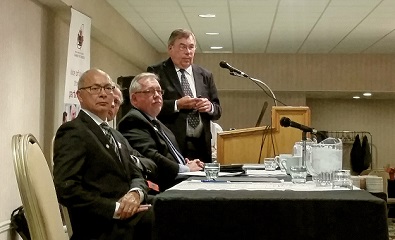The case for a second bridge was a big topic at a Prince Albert infrastructure conference on Wednesday.
One speaker unveiled the economics of Prince Albert’s Diefenbaker Bridge.
Each time the full bridge is down, there’s a $1.8 million economic hit, and a lane closure alone has an economic impact of $100,000.
Speaker and economist Gordon Sparks told the crowd of regional, municipal, and provincial leaders how he came to those numbers. This included looking at how far people need to go out of the way on alternate routes and the cost of that trip for freight and normal traffic.
It also meant looking at how much traffic crosses the Diefenbaker Bridge on a regular basis.
“We see that this bridge, for example, is one infrastructure need. It’s handling traffic for the whole, entire north-central region of the province. And it’s a long way on either side of Prince Albert to take that crossing happen. So in turn that costs a lot of money,” said P.A. Chamber CEO Larry Fladager.
He says this is felt in the north.
“Seventy-five per cent of the traffic, for example, on this bridge is not traffic in Prince Albert,” Fladager said. “Likely that’s where a lot of that traffic is going to, it’s going to the mines, the communities in the north, it’s going to the lumber operations, etc.”
The conclusion Sparks came to is that we need to look at how best to take care of current infrastructure. In the case of the Diefenbaker Bridge, there are many challenges: it has already been through a fracture that restricted bridge access, and only has a 20-year lifespan left.
Sparks added that, as a consultant, the biggest factor in moving forward with a project is when those involved put emotional decisions to the backburner, and focus on facts to come to a collective decision.
Politicians and industry filled the room; something that the Chamber had been aiming for, Fladager said.
“You’ll see the mayors, you’ll see councillors, you see reeves, you see MLAs. The reason we wanted to bring them together is so we can get the collective voice and we can really take the next step for planning for the future,” he said.
He says those steps aren’t always quick – something that was discussed by keynote speaker, Murray Totland with the City of Saskatoon. He’d pointed out that big infrastructure projects like hospitals and bridges can take about eight years of behind-the scenes work.
